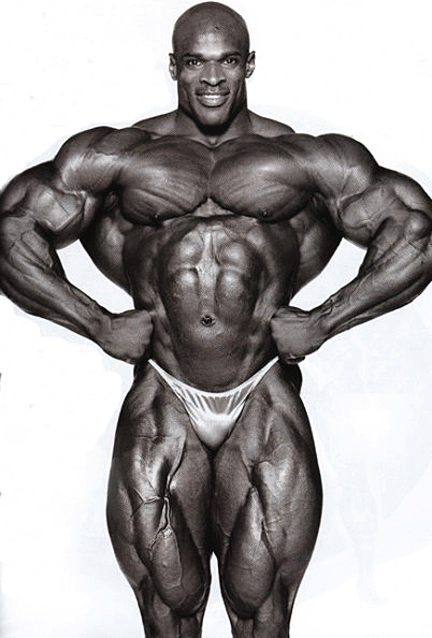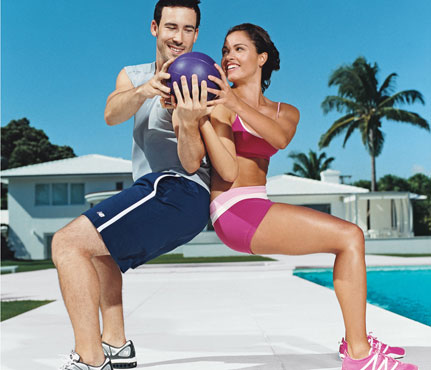
Does this look natural to you?
(Okay, for many of you this is outright disgusting and for others, compared to the many American men sporting monster bellies, it’s a breath of fresh air.)
For sure this guy looks big and muscular; for sure he looks strong; but there are a couple of questions that begged to be asked:
1. Is he healthy?
2. Is he fit?
These are not only interesting questions, but important ones as well. There are many ways to look big and strong, which can give the impression of being healthy and fit, but is big and strong healthy and fit? A body builder or even an Olympic weight lifter is unquestionably strong; but … fit? … healthy?
Rule One: To be healthy, you must be fit. BUT, a person can be fit, and not be healthy. For example, it’s highly probable that the man pictured above has taken steroids to get the way he is. It’s hard to know whether he can run, jump, and do sustained exercise over time – a sign of being fit. We do know that steroids destroy one’s health over time in many ways.
Bodybuilding and fitness magazines are filled with pages that boast men and women with bulging muscular figures, super-tanned bodies, and not a trace of fat on them. At first glance at a bodybuilder or fitness model, you might say “Wow, they look incredibly fit!” But, physical appearances can fool you. While bodybuilders and fitness models are certainly adept at sculpting their bodies by doing exercises that isolate particular muscle groups, they are often far from being healthy and fit; and they are often even far from being functionally fit. There can be benefits to isolation and machine exercises, but if your goal is to maximize your overall health and your ability to perform everyday tasks and challenges, there are a different set of skills on which you should focus.
At Bonfire we advocate exercise regimens that use what are called universal motor recruitment patterns – exercises that get your entire body moving in symphony…efficiently, effectively and quickly from one place to another with strength, balance and agility. These movements are universal in that they are found everywhere. These basic movements are used in everything you do in daily life, from homemaking to physical labor to sports and recreation; they include:
- Jumping
- Lifting
- Reaching
- Pushing
- Pulling
- Throwing
- Running
- Climbing
These functional movements mimic what you do in life versus calf-raises, pec-flies or leg curls, which are non-functional, isolated and artificial movements that do not serve us in real life activities. Universal motor recruitment patterns are safe, in fact the safest kinds of movements you can do. Adduction/abduction machines, lateral raises and flies are not natural, and thus are not inherently safe movements.
Also, when doing universal recruitment type of exercises it’s very demanding on the cardiovascular system which makes your ‘workouts’ very time efficient – you get an awesome workout in a very short period of time. For more on this subject, please read Short Interval High Intensity Exercise.
The 10 Elements Of Fitness
According to Crossfit.com, if your goal is optimum physical competence then there are 10 general physical components that need to be considered:
1. Endurance (Cardiovascular and Cardio-Respiratory): This is your body’s ability to use and deliver oxygen to your body.
2. Stamina (Muscular Endurance): This is your body’s ability to store, process, and use energy.
3. Strength: This is the ability of your muscles or a muscular unit to apply force.
4. Flexibility: The ability to maximize the range of motion of a joint.
5. Power: The ability of your muscles to maximize their force in a minimum amount of time.
6. Speed: The ability to minimize the amount of time it takes you to accomplish a task or movement.
7. Coordination: The ability to combine several different movement patterns in a single distinct movement.
8. Accuracy: The ability to control a movement in a given direction or intensity.
9. Agility: The ability to minimize the time going from one movement to another.
10. Balance: The ability to control the center of gravity of your body in relation to your supportive base.
The first four (Endurance, Stamina, Strength, Flexibility) are organic (natural) and are developed through exercise and training. Science has shown that improvements in each one of these components can be confirmed biologically (actually under a microscope) as you improve your training. The last four (Coordination, Accuracy, Agility, Balance) are neuromuscular and developed through practice and repetition. These are improvements that we see with specific challenges and tests. Those that are a combination of both (Power, Speed) are improved when exercise and training are combined with practice and repetition over time.
The Bonfire Health exercise program has been designed to help you build all 10 of these fitness elements regardless of your age or current level of activity. All of the workouts are tailored to any fitness level and are composed of movements that will help you build outstanding results in your health and fitness.
We were built to be healthy and successful; we were meant to move. Follow the Bonfire program and unleash your potential to be strong, fit, functional, healthy and ready for life’s challenges!


